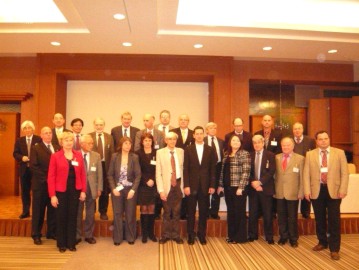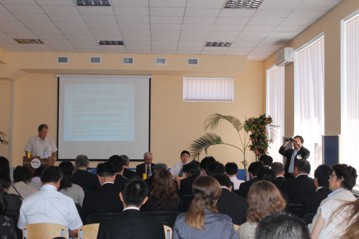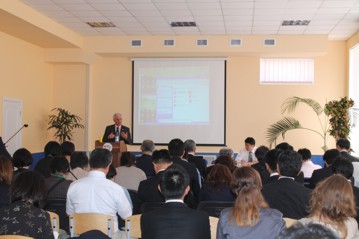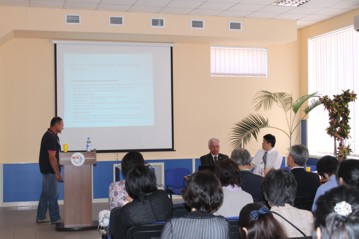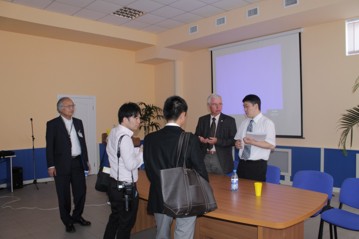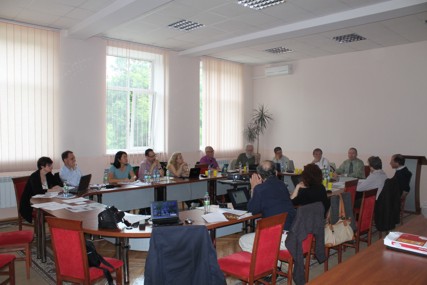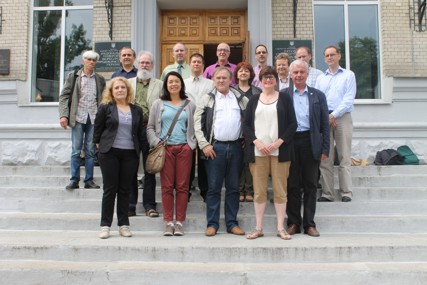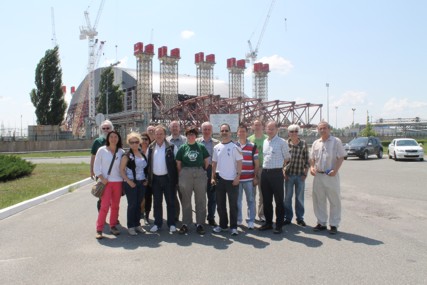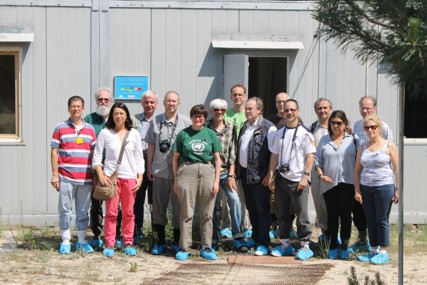
Completion of the
COMET international research project
The pan-European research project of the 7th
Framework Programme of European Commission (EC FP7), COMET (COordination
and iMplementation of a pan-European instrumenT for radioecology) will
be concluded in 2017.
Twenty
partners (the world's leading radioecology-focused
research institutions from Belgium, Finland, Norway, France, England, Spain,
Sweden, Germany, Japan, Australia, USA and Ukraine),
amongst which NULES of Ukraine, have dedicated 4 years on conducting innovative
research in the field of radioecology, have done a vast amount of research with
significant results in the framework of this project.
Researchers of the Ukrainian institute of agricultural
radiology (UIAR), who were direct executors of the COMET project from NULES of
Ukraine, Doctor of Biological Sciences, Professor Valerii Kashparov; PhD Sviatoslav
Levchuk; PhD Valentyn Protsak; PhD Valeriia Morozova and PhD Dmytrii Holiaka
took part in the COMET Final Event that took place at
the end of April 2017 in Brugge (Belgium),
which is one of the most beautiful cities in Europe.
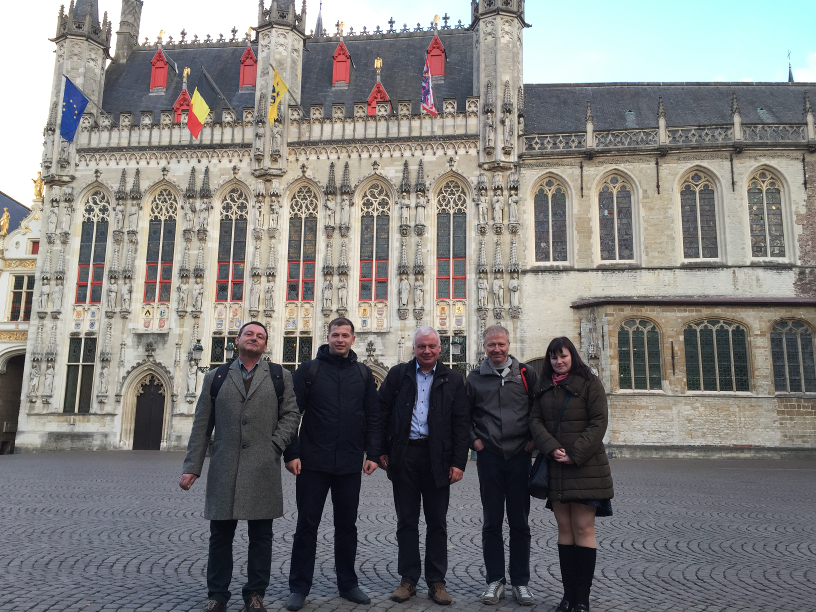 |
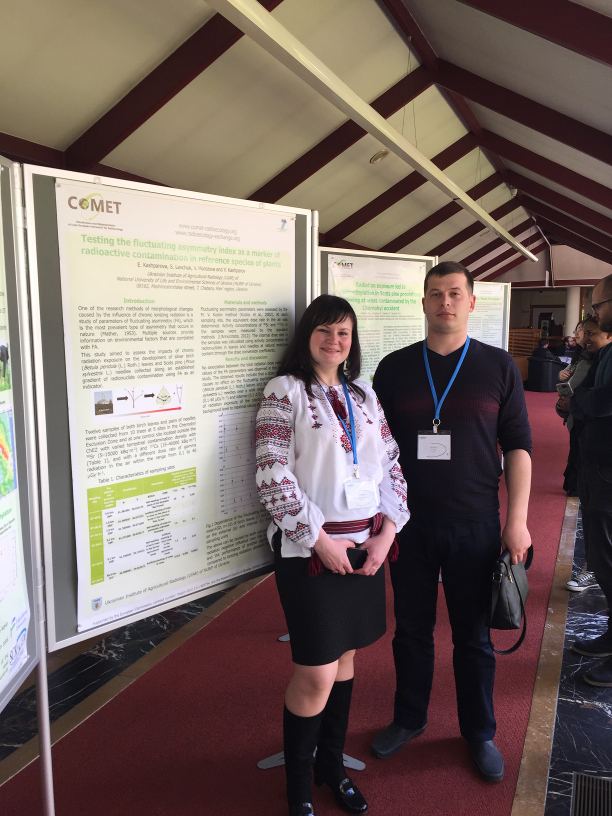 |
 |
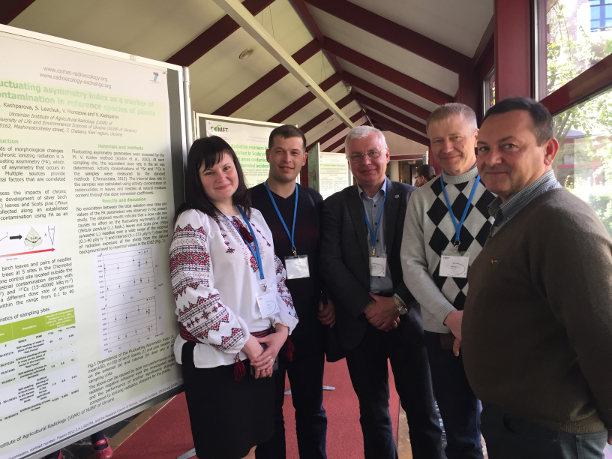 |
In the framework of COMET project, physical and
chemical properties and environmental impact of Chernobyl hot particles
as a specific form of Chernobyl radioactive fallout were studied by the
researchers of UIAR of NULES of Ukraine.
Kinetics of the fuel particles dissolution both in natural and model conditions
was studied and the dissolution rates were obtained. The results of this study
make it possible
to predict changes in radioecological state
of terrestrial ecosystems of the Chernobyl Exclusion Zone, including radioactive
waste disposal sites and drained areas of the cooling pond of the ChNPP. These
results can be also used for management of other emergency situations with the
release of irradiated nuclear fuel.
For the first time, a dynamic of root uptake of radioactive cesium by plants on peat soils in Ukraine was determined, where abnormally high transfer factors were revealed, and uptake of long-lived radionuclides (99Tc, 238-240Pu, 241Am) by agricultural crops on different types of soil was investigated by the researchers of UIAR of NULES of Ukraine. A complex study of radionuclide fluxes in forest ecosystems after the Chernobyl accident was carried out in the framework of COMET project.The results of these studies were presented as a plenary report by Professor Valerii Kashparov during the COMET Final Event.
One of the significant steps of our university in the
implementation of the international project of the European Commission, COMET,
was the holding an international seminar Fieldcourse on Chernobyl Fallout in the
Environment in 2016 on the basis of NULES of Ukraine. 29 Students and 10
postdoctoral researchers took part in this course. The program of the
fieldcourse included lectures of leading European scientists-radiologists and
laboratory studies.
Besides it, radiobilogical effects of chronic ionizing
radiation on reference species of plants at the zones, contaminated as a result
of the Chernobyl accident, were studied by the researchers of UIAR. The results
of this study were also presented during the poster session of the COMET Final
Event.
 |
In general, the contribution of the researchers of UIAR
to the project of the 7th Framework Programme of European Commission,
COMET, was significant and valuable that was a serious step forward of NULES of
Ukraine in the field of
international
collaboration.
We would like to express our sincere gratitude to the
organizing committee of the Final Event of the COMET international project for
the invitation and the atmosphere of the event, which have made possible to have
a productive dialogue with foreign colleagues and share findings and opinions in
one of the most beautiful cities in Europe.
|
|
|
|
|
|
The Interim Meeting of Working
Group 1 (Remediation
strategies and decision aiding techniques) of the IAEA’s MODARIA (Modelling
and Data for
Radiological Impact Assessments) was held at 3–7 June 2013 at the premises
of National University of
Life and Environmental Sciences of Ukraine
and of its structural division, Ukrainian Institute
of Agricultural Radiology.
|
|
|
|
|
|
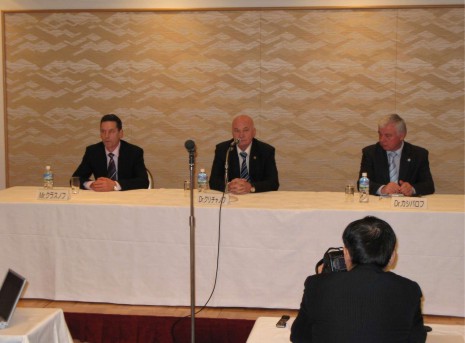
On January 30-31, 2012, Director of the Institute for Safety Problems of Nuclear Power Plants, National Academy of Sciences of Ukraine, Hero of Ukraine O.Kliuchnykov, Director of the Scientific Research Institute for Agricultural Radiology of the National University of Life and Environmental Sciences of Ukraine V. Kashparov, Head of Nuclear & Radiation Safety Division of the Institute for Safety Problems of Nuclear Power Plants V.Krasnov were visiting Japan at the invitation of the Head of the Study Group on Optimization of Nuclear Safety Regulations of the Japan Nuclear Energy Safety Organization Mr. Wataru Mizumachi.
During the visit, Ukrainian specialists attended the Symposium “Strategy to overcome “Fukushima-Daiichi” NPP accident - using the experience of Chernobyl 1986", held a press-conference for mass-media of Japan and met with some members of the Parliamentary Fukushima Nuclear Accident Independent Investigation Commission.
On January 30, 2012, in the frame of the Symposium, Ukrainian Chernobyl consequences overcoming and mitigation experts delivered some presentations for the representatives of Electric Power Ñompanies-NPPs Operator of Japan, scientific and technical experts in the field of nuclear safety, members of governmental and nongovernmental organizations and commissions involved in post-accident activities at “Fukushima-Daiichi” NPP and rehabilitation of radiation-contaminated land, as well as journalists of leading mass-media of Japan.
On January 31, 2012 the three-hour press-conference of Ukrainian scientists was held for more than 10 representatives of Japan's most influential mass-media. Journalists asked the most disturbing questions for Japanese about consequences of the largest man-made disaster occurred 25 years ago in Ukraine, the impact of radiation on the affected people and their treatment, policy of state regarding the evacuated population and liquidators, measures and experience that could help the Japanese to overcome the Fukushima crisis by using Ukraine's advanced and reliable technologies.
The same day, the Ukrainian delegation met with members of the Parliamentary Fukushima Nuclear Accident Independent Investigation Commission headed by Ñhairman, former Head of the Council for Science and Technology of Japan Mr.Kiyoshi Kurokawa. During the meeting, our experts responded to numerous questions of members of Commission in accordance with their mandate and objectives. Vice-Chairman, former Ambassador of Japan to the UN Mr.Kenzo Osima pointed out that the visit of the special delegation of the Parliamentary Commission to Ukraine to study of the Ukrainian experience at the place of disaster is currently under consideration.
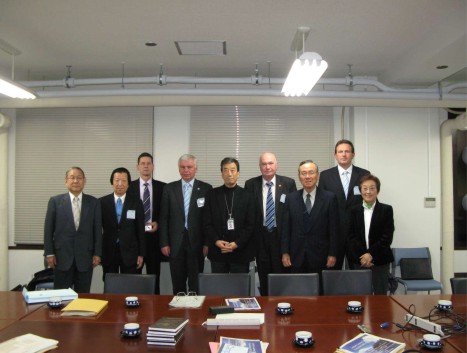
http://www.mfa.gov.ua/japan/ua/news/detail/75447.htm
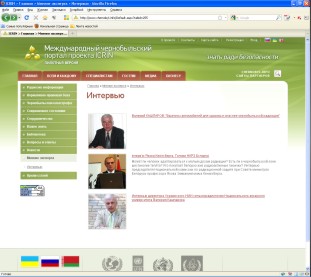
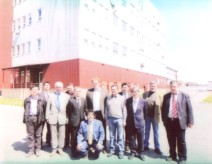
During 2011 UIAR has had more than 10 meetings and consultations with the Japanese specialists representing the Ministry of Agriculture and Ecology and the Parliament delegations of Japan for discussions of the problems related to the accident at the Fukushima-1 NPP in March 2011.
UIAR NUBiP
of
Ukraine
also
was
presented
at
the
ISTC/STCU Symposium
and
Seminar
“The Experience and Technology of Russia, Ukraine, and Other CIS Countries on Remediation and Restoration of Environments” held in Japan, 3-4 Feb 2012. Minister of the Environment, Minister for the Restoration from and Prevention of Nuclear Accident, Minister of State for the Nuclear Power Policy and Administration, Mr. G.Hosono, other high-rank officials, scientists and representatives of international boards and public of Japan attended the events. Head of Lab of UIAR,Dr. V.I.Yoschenko, made a detailed presentation at the symposium in Tokyo on Feb, 3, and gave a short report at the seminar in Fukushima on Feb, 4.
http://www.mfa.gov.ua/japan/ua/news/detail/76640.htm
http://www.stcu.int/news/index.php?id=362

